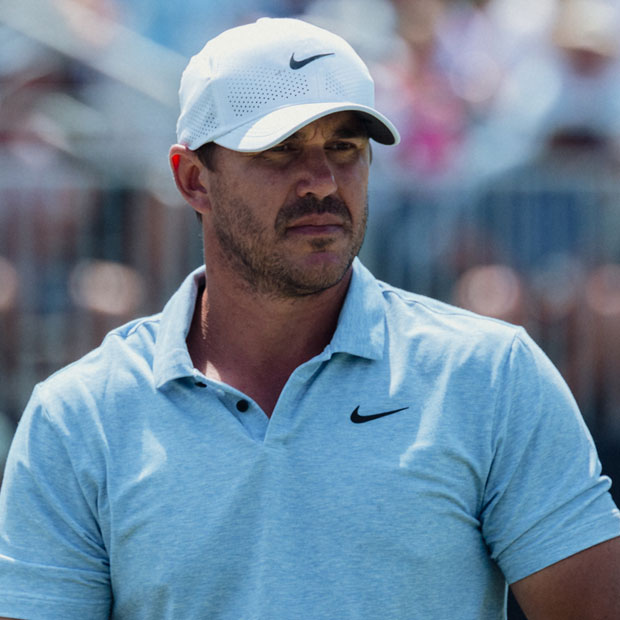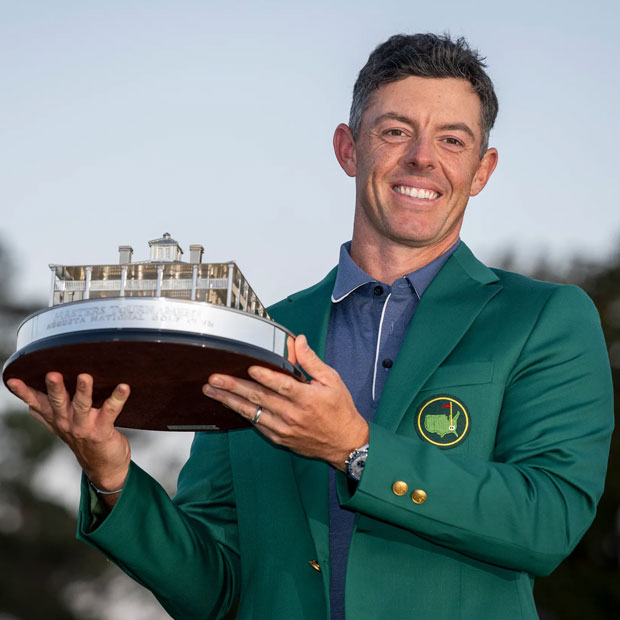How Deep Is Your Bag?
Bay Hill’s disappearing short-grass areas and the PGA Tour’s disappearing tests of skill


Chicago Bulls fans were treated to a surprisingly enjoyable 2021-2022 season thanks in large part to the acquisition of DeMar DeRozan. He brought a basketball joy into my life that I didn’t anticipate. For those who aren’t NBA fans, DeRozan had career year at the age of 32, something that’s almost unheard of in the league. He went from a very good player and occasional All-Star to a legitimate MVP candidate for most of the year.
DeRozan was a supreme athlete in his earlier years, but his game has aged extraordinarily well despite declining athleticism. Part of that fine-wine aging is a unique skill set compared to most superstars—he excels in the range between the 3-point line and the paint, aka the midrange. This is a shot that had become an endangered species in the NBA, largely because of analytics insights that put greater value on shots close to the rim and behind the three-point line. DeRozan has always been a good midrange shooter but as his footwork has continued to evolve and improve, he has become deadly, and at time, unguardable. The hip basketball writers mentioned that DeRozan often “reached into his bag” when he shook a helpless defender with a hesitation dribble before pulling up for an effortless 18-footer. He went into his seemingly endless repository of shots and moves that lead to the same endpoint: getting a bucket.
DeMar going in the bag!@NBCSChicago | @DeMar_DeRozan pic.twitter.com/mQ7w6yxYKv
— Chicago Bulls (@chicagobulls) January 29, 2022
What’s particularly fun to watch with DeRozan on a game-by-game basis is that his bag is a distinct universe from the superstars who get it done with three-pointers or the athleticism he possessed in his earlier years. It’s a never-ending combination of stutters, jabs, and hesitations to get to where he wants to, elevate, and drill a shot no matter the defender. You can probably tell I’m quite smitten, but I promise this is not an NBA article, so let’s get to the golf.
Much like DeRozan, the best golfers in the world have an array of shots in their bag mere mortals can’t fathom. These shots are not simply the 320-yard drives but rather the choke-down, cut 7-iron or the 52-degree pitch that hits into a false front and grabs on top of the ridge with just the right amount of spin before trundling down towards the hole. In most cases we see how deep a player’s bag is when the natural elements are right. Firm conditions promote different shot shapes into greens. Wind forces players to keep the spin off the ball and carve shapes to retain distance control. A course with great natural features, such as uneven lies and greens on ridges, requires non-stock shots into greens or off tees.
One way almost any course can give players the ability to showcase a range of shots and skills is with short grass around green. Short grass surrounds are where we golf fans see the most variety in methods that players use to hit it close. Some might putt, some might hit a bump-and-run, some may opt for the low spinner, and others will take the trusty 60 degree out and play it high. Long, thick rough presents a much simpler situation, likely an automatic grab of the 60-degree and an explosion shot that resembles a bunker shot. This makes the decision simple, and the shot becomes about predicting how the ball is going to come out of the lie. Short-grass surrounds give players a blank canvas to reach into their bag and create art.
Last year at Bay Hill, the PGA Tour and tournament organizers decided to move away from short-grass surrounds and back to long, thick rough abutting the greens.
Some of the noticeable green-surround changes to Bay Hill this year…
No. 4 (before/after): pic.twitter.com/VcES2fNaB7
— Brentley Romine (@BrentleyGC) March 4, 2022
This would be like telling Demar DeRozan that he couldn’t shoot the midrange shot for an entire week of games. This move was undoubtedly made to make the course “more difficult,” or at least one specific conception of what that means. Similarly, if you removed the midrange shot, it would make the game of basketball far more difficult for DeRozan and diminish the value of a skill that sets him apart. In both cases, removing shot options leads to more difficult scoring conditions but also sadly removes opportunities for players to reach into their bags and show us their skills.
A player with one of the deepest bags on tour, Rory McIlroy, actually commented on the loss of short-grass areas at Bay Hill. “I prefer the runoffs,” McIlroy told Golf Channel’s Brentley Romine. “I think it separates the good chippers from the bad chippers. I feel like, when you miss a green when the rough is like this, you know, it’s half skill, half guesswork and luck…. Whenever you miss greens and there’s runoffs and it gives you options. I think that’s where the guys with the better short games separate themselves, so that’s why I like runoffs. I like that style.”

Rory McIlroy, fan of subtle and varied skill sets
Contrast that with comments on the rough from Bland Cooper, the PGA Tour’s competitive agronomist. Cooper also told Romine, “We felt like it’s a hard golf course and it’s supposed to be hard.” That’s two hards for the price of one.
Sure, golf is hard when you put long grass everywhere, but are we identifying the most skilled player when we do that? Just like if you put a fence around certain areas of a basketball court, the game would get harder. But would it be better?
It’s time for golf to move past this basic concept of “hard” and in the direction of displaying who’s got the deepest bag. Hard is relative, and last time I checked, scores keep getting lower. So instead, let’s set up courses that further embrace the exhibition of these players’ immense and varied skills. Short-grass areas are one simple way to do this.
Leave a comment or start a discussion
Engage in our content with thousands of other Fried Egg Golf Club Members
Engage in our content with thousands of other Fried Egg Golf Members
Get full access to exclusive benefits from Fried Egg Golf
- Member-only content
- Community discussions forums
- Member-only experiences and early access to events











Leave a comment or start a discussion
Lorem ipsum dolor sit amet, consectetur adipiscing elit. Suspendisse varius enim in eros elementum tristique. Duis cursus, mi quis viverra ornare, eros dolor interdum nulla, ut commodo diam libero vitae erat. Aenean faucibus nibh et justo cursus id rutrum lorem imperdiet. Nunc ut sem vitae risus tristique posuere. uis cursus, mi quis viverra ornare, eros dolor interdum nulla, ut commodo diam libero vitae erat. Aenean faucibus nibh et justo cursus id rutrum lorem imperdiet. Nunc ut sem vitae risus tristique posuere.